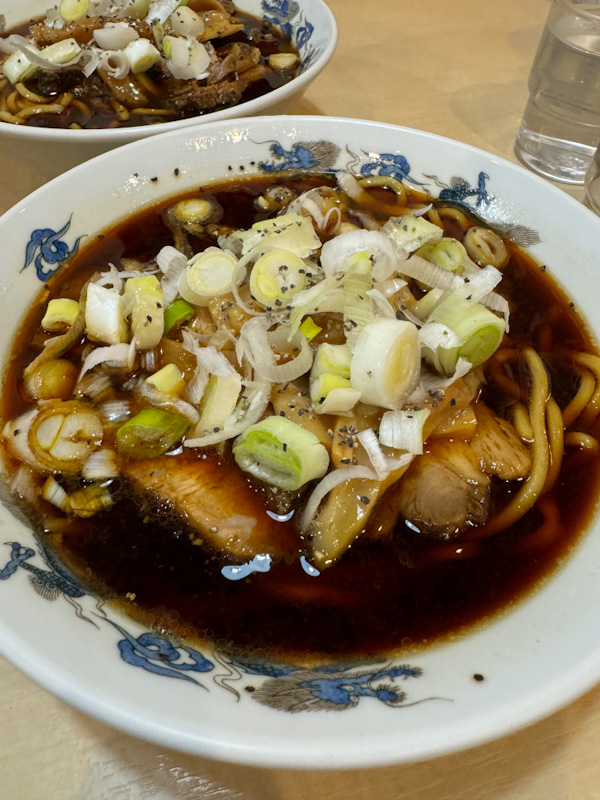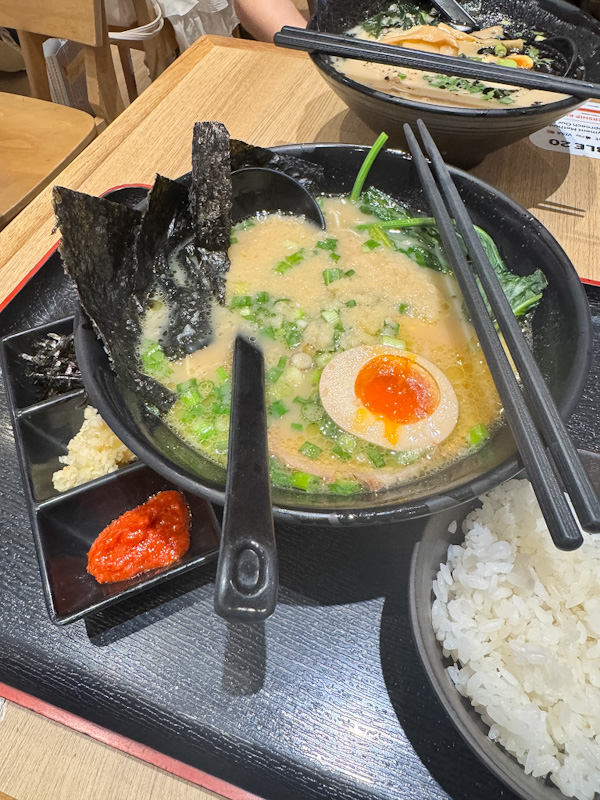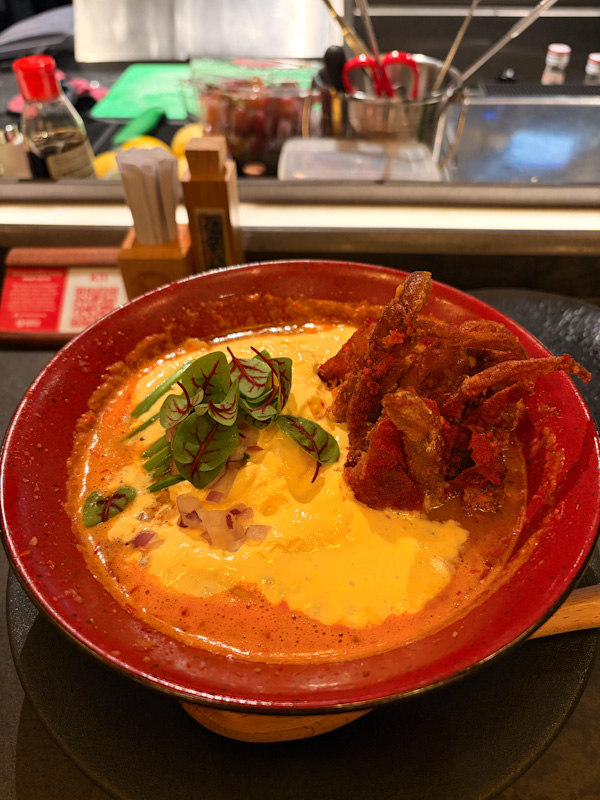WHAT WE ATE
- Chuka Soba (Toyama Black Ramen) – 70/100, Toyama



The history of Toyama’s black ramen is intriguing, with the original family persisting in preserving its timeless recipe for three generations since its inception. According to my Google translation of their in-store history, during the post-war period, many workers struggled to access a balanced meal, facing a shortage of sodium or “flavour”. Some ‘wise men’ devised a ‘side dish’ to supplement workers’ sodium intake. The noodles are crafted to require thorough chewing, with ample meat and sodium, presumably to induce a quicker feeling of fullness. Workers could then consume the remaining soup with their rice, showcasing the ingenuity of this invention – a meal serving a larger purpose.
Note: I believe a specific technique is necessary to fully appreciate this dish. Incorporating raw eggs and rice, or adjusting the sequence of consuming toppings, could significantly enhance the dining experience.





Chuka Soba (Toyama Black Ramen) – 70/100
Noodle: 35/35
The noodles are thick, round, and boast a vibrant yellow hue. Their dense, firm, and chewy texture offers a delightful earthy warm wheat taste. The noodles appear to be cut into shorter portions for easier consumption, facilitating manageable slurps.
Despite prolonged soaking in the extremely salty broth, they maintain their integrity, absorbing minimal soup with each slurp, avoiding bloating.
Soup: 10/35
The soup comprises a broth base with a significant influence of dark soy sauce, distinct from its bitter Chinese counterpart. This dark soy sauce imparts a sweeter and saltier flavor profile. In essence, the soup behaves more like a sauce than a standalone drink, perhaps explaining why it is typically served without spoons.
A direct sip of the soup delivers a shock to the system due to its saltiness, measured at 3.08 on our refractometer, significantly higher than the average ramen broth.
The initial sharp saltiness transitions to a subtle sweetness and fragrance of the soy sauce, albeit momentarily, before the overwhelming saltiness dominates the palate.
Post-research tips suggest consuming this dish with a raw egg to mitigate the saltiness and pairing it with onigiri to enjoy it as intended in the past. Adequate water intake is advised in between bites.
Meat: 20/20
The dish features a generous serving of marinated pork, with chashu slices of medium thickness, cut into flat triangular shapes reminiscent of cheese. The well-balanced marinade permeates all parts of the meat, rendering it soft, tender, and remarkably flavorful. The saltiness is more manageable here, accompanied by a pleasant sweetness.
Topping: 5/10
The larger-than-usual Negi adds a spicy kick that momentarily resets the palate. However, the bamboo shoot presents a unique challenge, oozing an intense saltiness that lingers, leaving a fluffy tongue sensation. If consumed alone, it tends to burn the tongue, emphasizing its overpowering saltiness.
DISCLAIMER
One man’s meat is another man’s poison.
Find out more about our palettes and how we evaluate our ramen here. 😉


